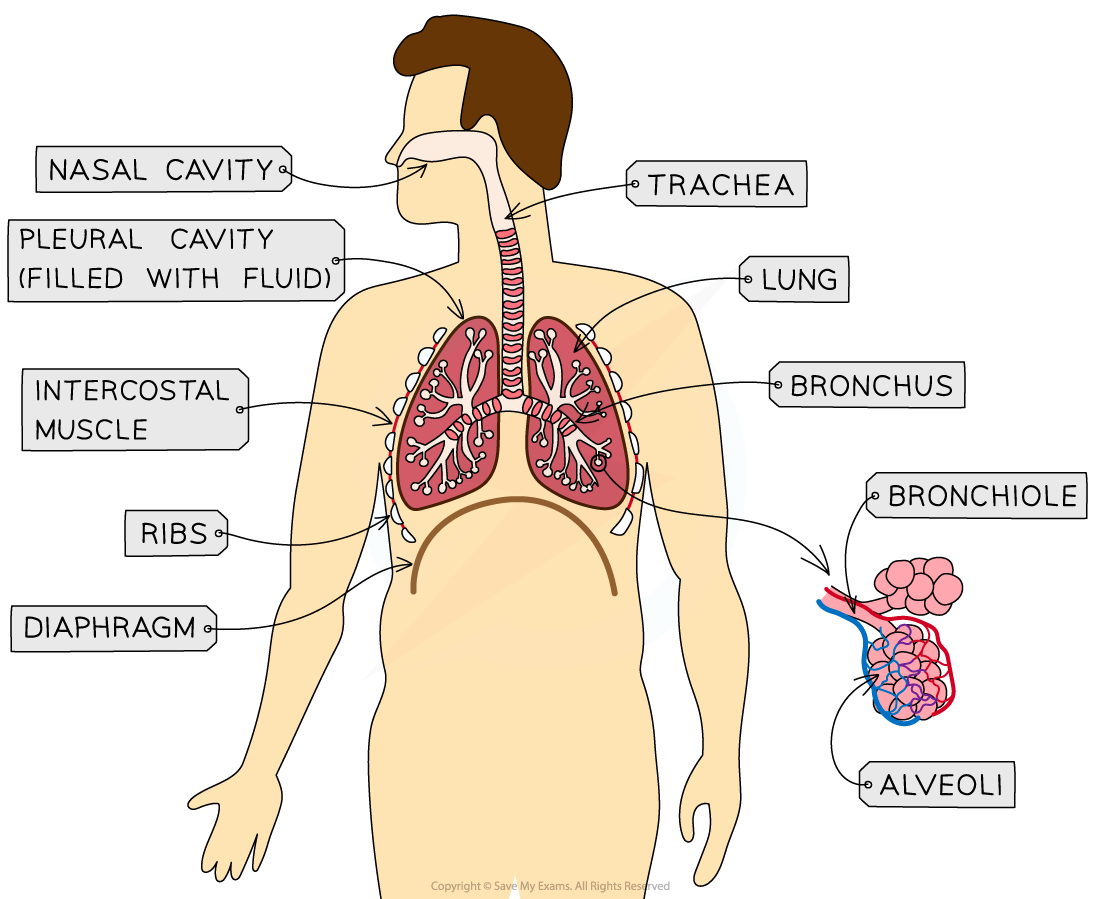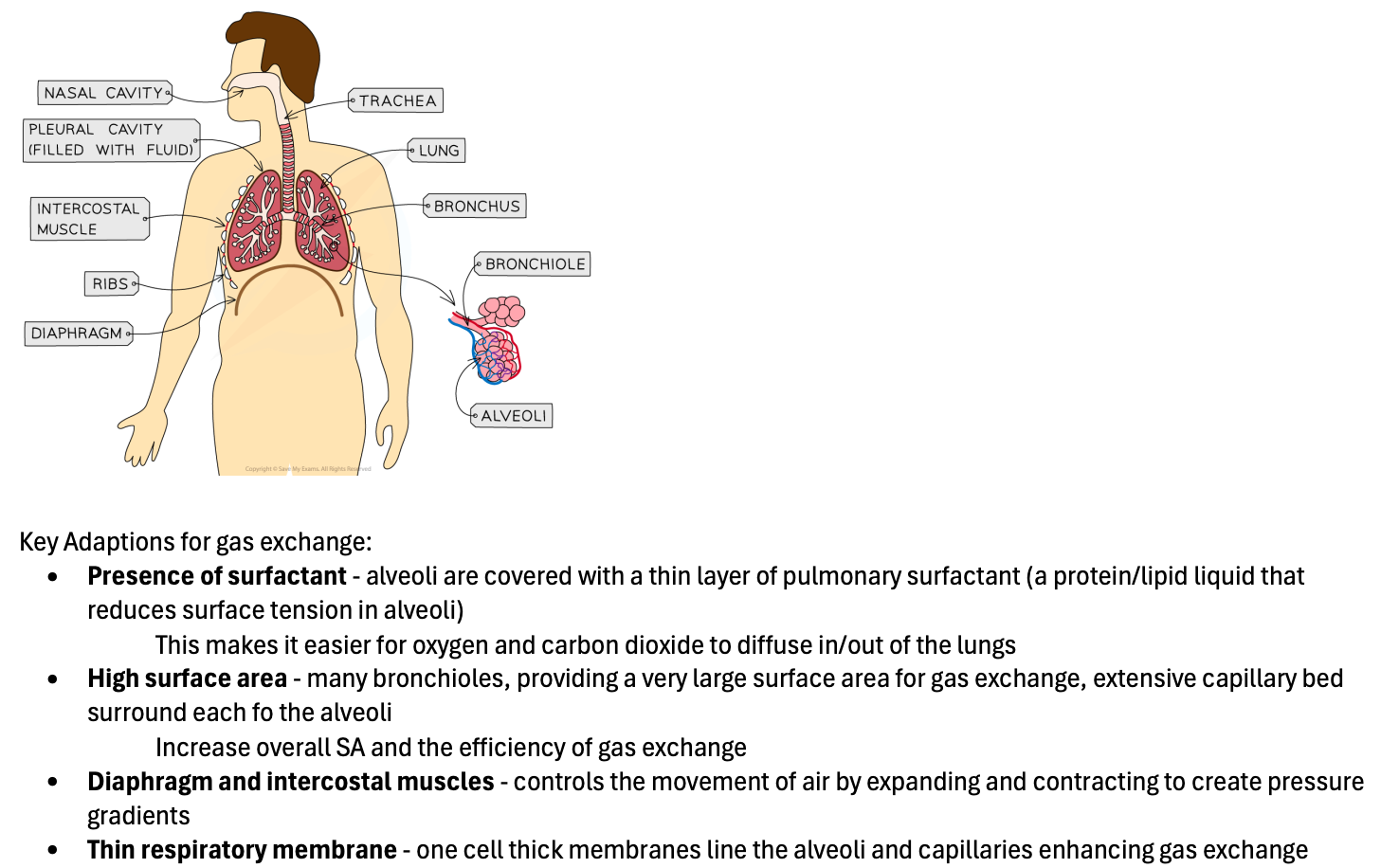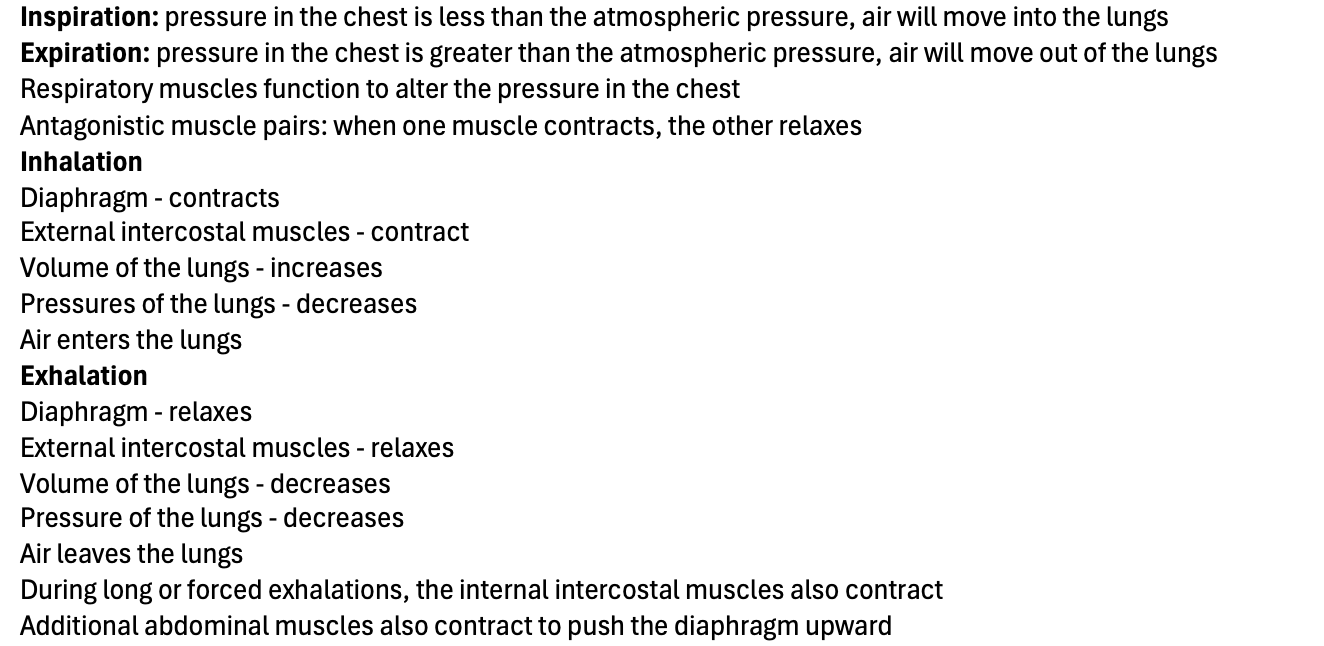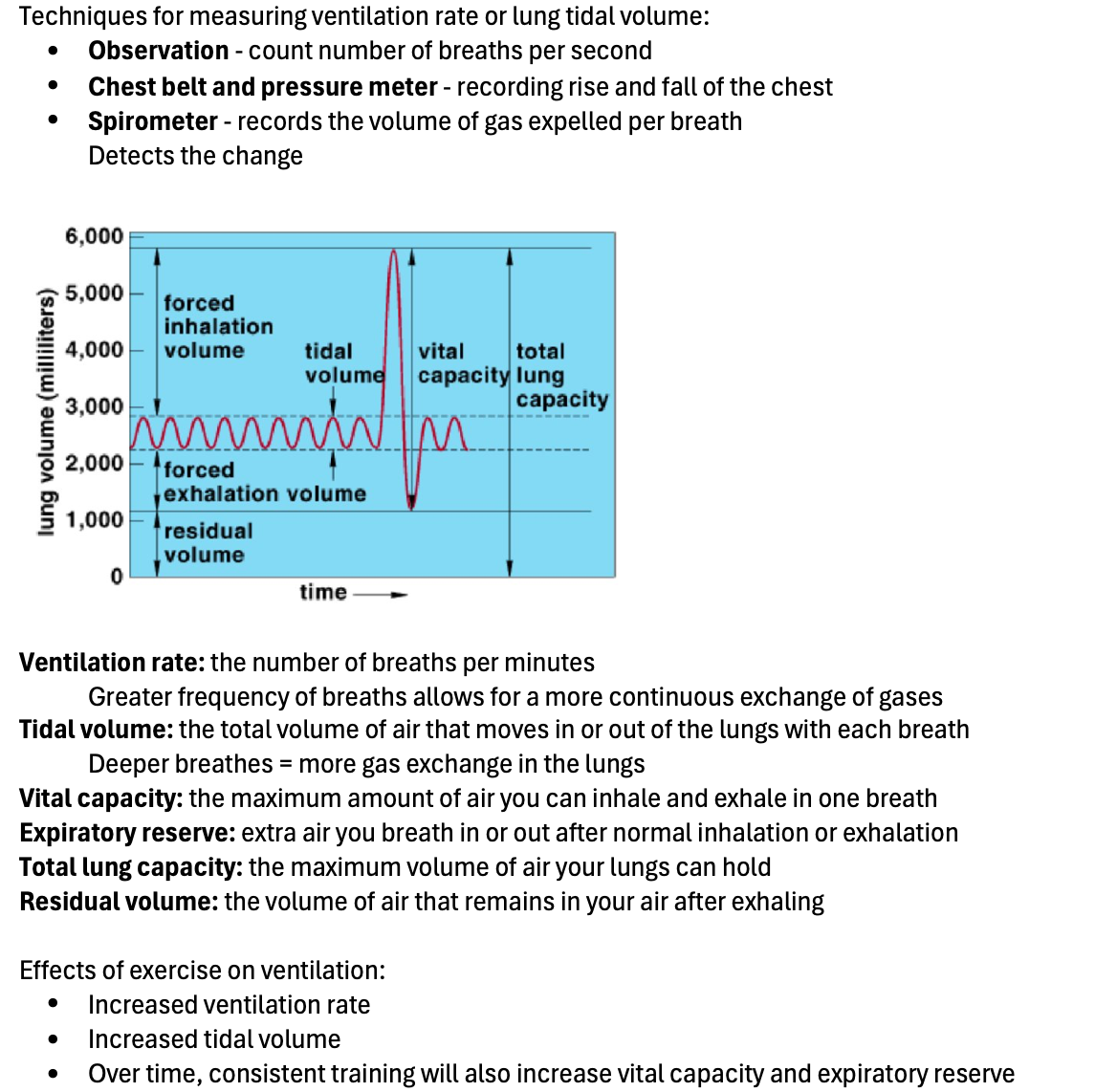The Lungs

Key Adaptions for gas exchange:
Presence of surfactant - alveoli are covered with a thin layer of pulmonary surfactant (a protein/lipid liquid that reduces surface tension in alveoli)
This makes it easier for oxygen and carbon dioxide to diffuse in/out of the lungs
High surface area - many bronchioles, providing a very large surface area for gas exchange, extensive capillary bed surround each fo the alveoli
Increase overall SA and the efficiency of gas exchange
Diaphragm and intercostal muscles - controls the movement of air by expanding and contracting to create pressure gradients
Thin respiratory membrane - one cell thick membranes line the alveoli and capillaries enhancing gas exchange
Ventilation
Inspiration: pressure in the chest is less than the atmospheric pressure, air will move into the lungs
Expiration: pressure in the chest is greater than the atmospheric pressure, air will move out of the lungs
Respiratory muscles function to alter the pressure in the chest
Antagonistic muscle pairs: when one muscle contracts, the other relaxes
Inhalation
Diaphragm - contracts
External intercostal muscles - contract
Volume of the lungs - increases
Pressures of the lungs - decreases
Air enters the lungs
Exhalation
Diaphragm - relaxes
External intercostal muscles - relaxes
Volume of the lungs - decreases
Pressure of the lungs - decreases
Air leaves the lungs
During long or forced exhalations, the internal intercostal muscles also contract
Additional abdominal muscles also contract to push the diaphragm upward
Measurement of lung volumes
Techniques for measuring ventilation rate or lung tidal volume:
Observation - count number of breaths per second
Chest belt and pressure meter - recording rise and fall of the chest
Spirometer - records the volume of gas expelled per breath
Detects the change
Ventilation rate: the number of breaths per minutes
Greater frequency of breaths allows for a more continuous exchange of gases
Tidal volume: the total volume of air that moves in or out of the lungs with each breath
Deeper breathes = more gas exchange in the lungs
Vital capacity: the maximum amount of air you can inhale and exhale in one breath
Expiratory reserve: extra air you breath in or out after normal inhalation or exhalation
Total lung capacity: the maximum volume of air your lungs can hold
Residual volume: the volume of air that remains in your air after exhaling
Effects of exercise on ventilation:
Increased ventilation rate
Increased tidal volume
Over time, consistent training will also increase vital capacity and expiratory reserve


